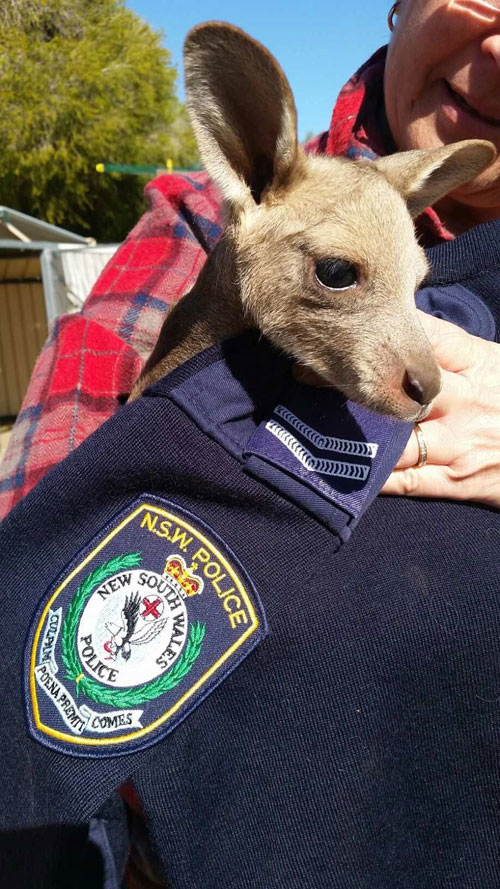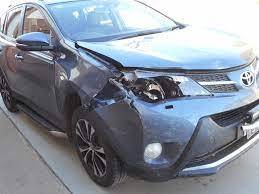Swerve, break or collide - what should you 'roo-ly' do?
Kristin Murdock
27 May 2023, 8:04 AM
 If you are unable to avoid a collision with a kangaroo, wildlife experts advise checking female's pouches for joeys.
If you are unable to avoid a collision with a kangaroo, wildlife experts advise checking female's pouches for joeys.New research by insurance company, AAMI, shows half of the Australian population has had a collision with a kangaroo or other wildlife while driving and alarmingly over 60 per cent of drivers would swerve to miss the animal or slam on the breaks.
Not good practices according to Lachlan Shire Councils' Road Safety and Injury Prevention Officer, Melanie Suitor
"We know one in five crashes in NSW involve an animal," Ms Suitor said. "There are some common sense ways to avoid running into one like avoiding their active times at dawn and dusk."
The research data backs this up, saying more than a quarter of wildlife related accidents occur between 4.30pm and 8pm.
"Reducing speed at these times is good advice and always be alert through signposted areas for kangaroos," Ms Suitor said. "We found kangaroos hung at the roadside to graze during drought but then they drink by the roadside when its wet, so they are always around."
And as for the decision whether to swerve or break?
"It's much better to hit an animal than swerve and possibly cause more damage to yourself and your car," she said.
The Dubbo area tops NSW statistics as an "animal accident hotpot" and research clams that winter is the worst time for collision. Interestingly, most accidents occur on Sunday evenings. Winter is the worst time of year for animal versus vehicle collisions with 30 per cent of accidents taking place from June to August, primarily due to decreased visibility.
“The darker winter months are the most perilous time for wildlife on our roads. Hitting wildlife can not only cause vehicle damage and emotional distress for the driver involved, but also the loss of native animals, which has a huge impact on Australia’s biodiversity and endangered species," Kristie Newton from Wildlife Information, Rescue and Education Service (WIRES) said.
The Dubbo Branch of WIRES encompasses Wilcannia to the west, up to Bourke and the Queensland border, across and down to Coonabarabran and Dunedoo in the east, then south to Mumbil and across to Parkes in the south - an area larger than the State of Victoria! With this much area, they see their fair share of animal collisions - primarily kangaroos.
“If you have hit an animal while driving, stop to check its welfare, but only if it is safe to do so. If the animal is alive and injured call WIRES or your local wildlife rescue service," Ms Newton advises.
“If the animal has died due to road trauma – especially if it is a kangaroo - check if it is a female and if there’s a joey(s) in her pouch or around her. Pouches/flaps of wombats and echidnas should also be checked as well as the surrounding area, as young echidnas are often dislodged during a vehicle collision."

A rescued joey. IMAGE: WIRES facebook
On their website, Dubbo WIRES relates the story of Brent, a policeman from Baradine, who was driving along the highway when he found a cold and lonely joey standing in the middle of the road.
"Being in a really bad mobile reception area Brent had to stand on the roof of his police vehicle to get enough signal to phone his wife, whom he asked to phone WIRES to see if the joey could be saved. WIRES confirmed that the joey could indeed be saved, so Brent wrapped the joey up in the only thing he had available, his policeman's jumper, and took her home.
"His wife very kindly drove over an hour to deliver the joey to the nearest WIRES carer in Tooraweenah. The joey, named 'Skipper' by her rescuers, was estimated to be about 8 months old and although a little underweight, was fit, health and fortunately uninjured. Skipper is now about 9 1/2 months old and is weighing in at a healthy 2.2kg," the WIRES story reports.

Roo damage. IMAGE: facebook
Braden Smith who manages Coonamble Crash Repairs with his parents said kangaroos definitely help keep them in business.
"We would have at least one vehicle a week coming in with kangaroo damage. Kangaroo damage and repairs probably makes up 80 per cent of our business."
Mr Smith said people often joked that he breeds kangaroos to drum up customers.
"We don’t need to, people just keep hitting them anyway," Mr Smith said. "They are in such big mobs and love the side of the road for feed, particularly now its drier here again. You can swerve as much as you want, you will still hit something.
"Personally, if it’s a choice of swerve or the animal, I would choose the second option. We can always fix your car, but if you swerve and potentially roll your vehicle, the damage to the people inside may not be fixable"
Mr Smith's advice is back up by Kahl Dwight, the head of AAMI's Motor Claims division.
“We encourage drivers to always expect the unexpected and know ahead of time what they should do– which is slow down and brake but avoid swerving so as not to endanger yourself and other drivers.
"It’s far less dangerous to keep driving and damage your car than swerve to avoid it and collide with another vehicle or tree. To avoid crashing with wildlife this winter, use your peripheral vision and be aware of your surroundings. Wildlife is unpredictable and can appear out of nowhere so it’s best to always be on the lookout.”




